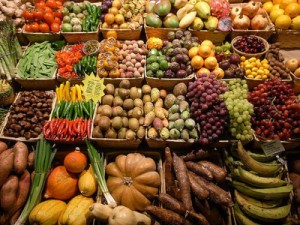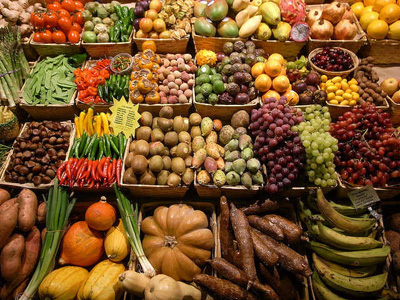 Anti-nutrients are chemical compounds found in our food. Often they are naturally occurring, although synthetic anti-nutrients exist too.
Anti-nutrients are chemical compounds found in our food. Often they are naturally occurring, although synthetic anti-nutrients exist too.
As the name suggests, anti-nutrients are compounds which work against the nutritional benefits in our food. Not all of them are bad, though. In the sections below we will take a look at which anti-nutrients are bad for you, where you find them, and how to remove them safely from your food.
What do anti-nutrients do?
According to studies done by the US National Library of Medicine, anti-nutrients inhibit the digestion and absorption of certain vitamins and minerals. Different anti-nutrients affect the assimilation of different vitamins and minerals. If you eat a lot of them you could become undernourished and deficient in vitamins and minerals, even though you’re eating good food. This is because they block the digestive enzymes that should be helping your body absorb its nutrients.
Which foods are high in anti-nutrients?
Anti-nutrients are found in a variety of foods, but are most commonly found in grains, legumes, nuts and beans. According to the US National Library of Medicine, these are the foods that contain the highest levels of anti-nutrients. There are also a number of plant roots, vegetables, leaves and fruits which contain smaller quantities of anti-nutrients. In nature these anti-nutrients serve to repel pests away from the plant. What they do is bind the vitamins and minerals in the plant to the anti-nutrient compound, making them un-absorbable to animals and pests.
The Types of Anti-nutrients
Gluten
This is one you have almost definitely heard of. Many people are sensitive to gluten, and in some cases the effect it has on the gut is so severe that it is classified as a specific ailment – celiac disease. Gluten is a plant protein which acts as an enzyme inhibitor. It can cause all kinds of digestive problems and eating too much of it will stop your body from being able to absorb important nutrients, especially iron and zinc. Gluten is associated with leaky gut syndrome, allergic reactions and mental sluggishness. Gluten consumption is also associated with headaches, fatigue, joint pain and a sluggish memory.
Gluten is found in all wheat, rye and barely products.
Phytic Acid (Phytate)
Phytic acid is another very common anti-nutrient. It interferes with the absorption of essential minerals, including calcium, phosphorus, copper, iron, magnesium and zinc. Studies show that phytate can block up to 80% of the phosphorous and zinc in your grains and seeds. It also messes with your ability to absorb calcium and iron, which increases your chances of low bone density and anemia.
Phytic Acid also inhibits the production of your body’s own digestive enzymes, amylase, trypsin and pepsin. Without them you can’t digest starch or protein.
Phytic acid is found in high concentrations is seeds, grains and legumes such as beans.
Tannins
Commonly found in tea and coffee, tannins are also an enzyme inhibitor. Tannins are a class of antioxidant polyphenols which can cause protein deficiency because they don’t allow you to digest proteins properly. The lack of digestion also causes gastrointestinal problems. Common symptoms include bloating, diarrhea and constipation. Fortunately there are many herbal teas on the market which are tannin free.
Oxalates
Oxalates are similar to tannins in that they inhibit your ability to process protein, although oxalates are more specific to plant proteins. They are commonly found in soybeans, sesame seeds, black millet and brown millet.
Calcium Oxalates is another variation which on the surface seems like it should be providing calcium. However the calcium in calcium oxalates is very poorly absorbed by the human body. Calcium oxates is found in dark green leafy vegetables like spinach.
Saponins
Saponins are an anti-nutrient which actually affects the gastrointestinal lining. They can penetrate the lining and enter the blood stream, triggering an immune response (or allergic reaction). They contribute to leaky gut syndrome and are almost impossible to digest. You may experience bloating, indigestion and gas. Saponins are found in beans and wheat.
Lectins
Lectins are similar to saponins in that they too can cross the gastrointestinal lining and trigger an immune response. Lectins are sugar binding and can effect cell to cell action. They too inhibit nutrient absorption. Lectins can damage the membranes of your epithelium lining. They also stimulate changes in your bacterial flora. Symptoms can be similar to food poisoning, causing rashes and joint pain.
Lectins are found in soybeans, badly prepared raw grains, legumes like peanuts and sometimes dairy.
Trypsin Inhibitors
Trypsin inhibitors inhibit the biological activity of trypsin. Trypsin is an enzyme that breaks down certain proteins in your stomach. Trypsin inhibitors are known for causing mineral deficiencies in babies and young children and anyone who has issues with reduced pancreatic function. They are found in most grain products like bread, cereal, porridge and baby food.
Isoflavaones
Isoflavaones are able to cause hormonal changes with estrogen-like effects on anyone who eats them. They are classified as endocrine disruptors for this reason. They also cause digestive issues and bloating. Isoflavaones are found in soybeans and should be avoided by anyone with hormonal problems.
Solanine
In high doses this anti-nutrient can cause a kind of poisoning with symptoms including nausea, vomiting, cramps, diarrhea and dizziness. Usually symptoms are only experienced by people who are sensitive to solanine. Solanine is found in nightshade vegetables like tomatoes, eggplant, and peppers, and is the main reason why some people are sensitive to these foods.
Chaconine
Chaconine is a steroidal glycoalkaloid which is naturally toxic. It causes problems with digestion over-all, making it difficult to digest any of your food. Chaconine is found in plants from the Nightshade family, which includes vegetables like potatoes and tomatoes. Generally only problematic when eaten raw, or in the case of green potatoes.
How to rid your food of anti-nutrients
You probably noticed that a number of otherwise healthy foods contain anti-nutrients. You don’t want to cut out every healthy food on the list just because it’s got a few anti-nutrients in it – you’ll have nothing left to eat! Luckily most anti-nutrients can be removed from foods easily enough just by preparing it correctly.
The methods below have been proven to be effective in removing most, if not all, of the anti-nutrients in your food:
Sprouting
Sprouting is most effective for removing Phytic acid in seeds, grains and legumes. It has also been shown to reduce the levels of lectins and protease inhibitors in these foods.
To sprout your own grains, seeds and legumes you need to first rinse them off with water. Then place them in a bowl and soak overnight in cold water. The next morning, drain the water off them and place into a sprouter (a colander works just as well). Cover with a clean towel and allow to stand for a day or two until small green sprouts appear. You should rinse your sprouts in clean water once a day. Sprouts will keep quite well out of the fridge for several days, provided you keep rinsing them and they are well drained.
Boiling
By boiling your food you are not only cooking it, you are also breaking down many of the anti-nutrients that are common in foods like beans, grains and potatoes.
Boiling effectively degrades lectins, protease inhibitors, and tannins. Boiling also lowers the calcium oxalate levels in green, leafy vegetables like spinach.
To boil foods you simply need to clean them and place them in a pot of hot water on the stove. Bring to the boil and keep the pot bubbling until the grains or veggies are soft. Longer boiling times generally ensure that you break down more of the anti-nutrients in the food.
Fermenting
Fermentation is the process used to make cheese, yogurt and even beer. What happens is that yeasts and bacteria (good ones) start digesting food and change its chemical make-up. The fermentation process degrades the anti-nutrients in grains. It degrades phytate and lectins substantially.
You can ferment your own bean and legumes:
Soak the beans for 24 hours in warm (but not hot) water. Then rinse them off and cook them slowly in plenty of water. When the beans are cooked place them in a large, clean container and stir in a small amount kefir water or whey from cultured yoghurt. This provides the right kind of cultures for fermenting. You will need about a table spoon of culture to every cup of cooked beans. Seal the container and allow them to stand at room temperature, in a dark area, for two to three days.
Make the most of the methods
You can combine many of the methods to get the best results. For example you can boil and then ferment your beans, or sprout your lentils before you boil them. You can use these methods with whatever grains you are cooking.
Final Thoughts
To live a happy, healthy life you need to eat from a variety of healthy foods. By being conscious of what you are eating and how you prepare it you can ensure that you and your family make the most of the nutrients and goodness in your food.
Do you suffer from bloating, gas or indigestion after eating beans, grains, and some green veggies?
If yes, your digestive system may be weak and not able to tolerate the anti-nutrients, go to the next page and watch the 3 tips to reverse these digestive-related issues –
About the Author:
Emma Deangela is the best selling author of The Alkaline Diet Program and 80/20 Fat Loss. She has helped over tens of thousands of men and women to lose weight and transform their health with sound nutrition advice. Check out her 4 foods to never eat for breakfast video to lose more than 18 lbs in 3 weeks.
Which wonderful friends in your life would appreciate this information about these tips on reducing anti-nutrients in their foods?
Please help them by sharing this eye-opening article with each of them using any of the social media and email buttons below.


Leave a Reply